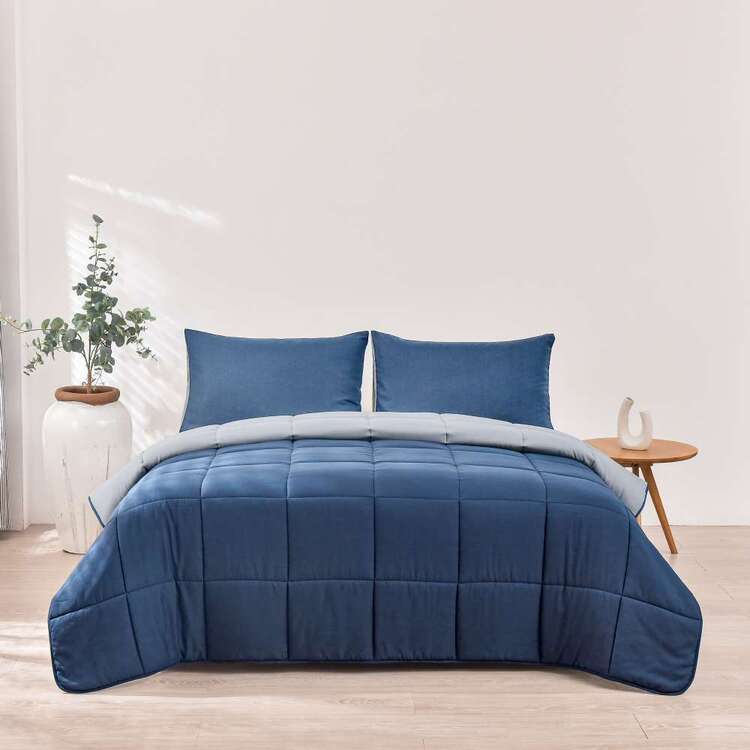The Ultimate Overview to Choosing the Ideal Bed Covering for Your Home
Choosing the optimal bed covering for your home is a nuanced process that calls for cautious factor to consider of a number of crucial variables, including material, maintenance, size, and style. The right fabric can boost comfort and longevity, while the ideal design complements your home's aesthetic. Furthermore, ensuring an appropriate fit can substantially influence the general look of your bedding. Understanding exactly how these aspects adjoin is vital to making an enlightened option. As we explore these dimensions better, you may discover that the perfect bed cover is not simply an ornamental item, but a crucial element of your space.
Kinds Of Bedspreads

First of all, conventional bed covers are identified by their all-encompassing layout, usually covering the whole bed, consisting of the cushions. These are frequently quilted or cushioned, offering warmth and a timeless look. In contrast, coverlets are lighter and typically utilized in warmer environments, featuring a more tailored appearance that drops just to the sides of the mattress.
For a more laid-back vibe, duvet covers are popular choices. They enclose a comforter and can be easily eliminated for washing, permitting flexibility in vogue. Likewise, comforters are thicker and normally loaded with artificial fibers or down, making them an outstanding choice for colder months.
Finally, tosses or bed blankets provide a decorative aspect while supplying extra heat. They can be draped over the bed or made use of individually for a comfortable touch. By thinking about these types, you can better align your choice with your functional requirements and visual choices, inevitably enhancing your bedroom's atmosphere.
Product Considerations
Selecting the ideal material for your bed covering plays a considerable duty in both comfort and sturdiness. The product you pick can influence not only the aesthetic of your bedroom however likewise just how well the bed cover carries out with time. Typical materials for bedspreads include cotton, linen, polyester, and silk, each offering distinct benefits.
Cotton is a preferred option as a result of its breathability, gentleness, and convenience of treatment. It is hypoallergenic, making it an excellent alternative for those with level of sensitivities - table cloths. Polyester, on the various other hand, is resilient and resistant to creases and fading, providing a low-maintenance choice
Bed linen, understood for its all-natural appearance and breathability, uses a glamorous feel but may need even more careful maintenance to protect against wrinkling. Silk bedspreads, while classy and soft, can be much less long lasting and commonly require dry cleansing, making them fit for even more official setups.

Design And Style Alternatives
A large variety of design and style options is offered for bedspreads, allowing property owners to reveal their personal visual while boosting the total setting of the room. From classic quilts to contemporary coverlets, bed covers can be found in different designs that satisfy diverse tastes and choices.
Typical layouts commonly feature abundant appearances and detailed patterns, click making them ideal for vintage or rustic-themed interiors. On the other hand, contemporary bed covers tend to accept minimalism with strong shades and clean lines, best for modern or Scandinavian-inspired spaces. For those seeking an eclectic allure, bohemian styles existing mixed patterns and vibrant colors, including a playful touch to any kind of area.
Along with design, the option of layout aspects such as prints, needlework, and color palettes can substantially affect the ambience of the room. Floral motifs stimulate a sense of peace, while geometric patterns can develop a more energetic and vibrant feeling. Eventually, selecting the ideal bedspread involves taking into consideration both aesthetic choices and the desired state of mind for the area, making certain that it complements existing decor while offering comfort and aesthetic rate of interest.
Size and Fit
The selection of a bedspread extends beyond aesthetic appeals; dimension and fit are essential variables that figure out both functionality and the general look of the bedding ensemble. table cloths. An ill-fitting click for more blanket can take away from the visual harmony of a space and may lead to sensible difficulties, such as insufficient protection or excessive bulk
To make certain the ideal size, start by determining your cushion dimensions-- size, width, and elevation. Criterion dimensions consist of double, full, queen, and king, but variants exist. Think about the desired decline length, which describes just how far the blanket hangs over the sides of the mattress. A decline of 12 to 15 inches is normal for a tailored look, while a longer decline can develop a more kicked back, extravagant look.
Moreover, take into consideration any added bed linens elements, such as mattress toppers or attractive cushions, which may affect the general fit. When selecting a bedspread, it is suggested to go with designs that offer some versatility in sizing, such as large choices. This strategy guarantees that the blanket fits varying mattress elevations and designs, boosting both comfort and visual charm in your bed room.
Upkeep and Treatment
Proper upkeep and treatment are crucial for extending the life of a blanket and preserving its visual appeal. Routine cleansing and interest to care guidelines details to the material are vital actions in maintaining its top quality. A lot of bed coverings can be machine washed, yet it is recommended to check the label for any kind of unique requirements.
To make certain longevity, laundry bedspreads in cool water with a mild cycle, making use of a light cleaning agent. For fragile materials like silk or specific synthetics, hand washing might be a lot more proper.
In addition, revolving your bedspread periodically can decrease use on certain areas. If spills take place, resolve them without delay by blotting instead of rubbing, to prevent stains from establishing. For bed coverings that call for dry cleansing, stick to a timetable to preserve quality and tidiness.
Verdict
Choosing the suitable blanket requires careful consideration of different elements, consisting of product, maintenance, style, and dimension demands. The option of fabric, whether breathable cotton, long lasting polyester, or elegant silk, must straighten with specific way of living Look At This and climate demands. Additionally, the bed covering's design have to complement existing decoration while making certain a correct suitable for the mattress. Prioritizing maintenance and treatment will certainly further boost the durability and visual allure of the bedspread, ultimately adding to a well-coordinated bed room atmosphere.
Selecting the suitable bedspread for your home is a nuanced procedure that needs mindful factor to consider of several crucial elements, consisting of product, size, design, and maintenance. The product you pick can influence not only the aesthetic of your room however additionally just how well the bed covering executes over time. Typical products for bed covers consist of cotton, polyester, silk, and bed linen, each offering distinct advantages.
Picking the optimal blanket necessitates careful factor to consider of various factors, consisting of material, design, maintenance, and dimension demands. Focusing on upkeep and treatment will better enhance the durability and visual charm of the blanket, inevitably contributing to a well-coordinated room environment.
 Jaleel White Then & Now!
Jaleel White Then & Now! Neve Campbell Then & Now!
Neve Campbell Then & Now! Alfonso Ribeiro Then & Now!
Alfonso Ribeiro Then & Now! Amanda Bearse Then & Now!
Amanda Bearse Then & Now! Traci Lords Then & Now!
Traci Lords Then & Now!